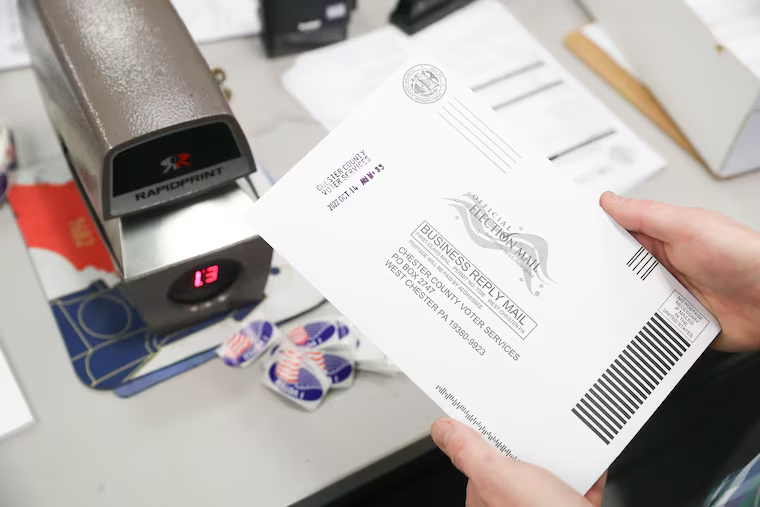Who’s voting by mail this year in Pennsylvania and how that’s changed, according to the data
Fewer than half as many Pennsylvania voters have requested mail ballots than at the same point in 2020.

Mail voting in Pennsylvania was all the rage in 2020.
But less than a week before Tuesday’s deadline for voters to request ballots, fewer than half as many had done so than at the same point in 2020, according to data from the Pennsylvania Department of State, which oversees elections.
That shouldn’t be surprising. Overall voter turnout in midterm elections is historically much lower than in presidential races, and the 2020 election took place during the worst public health crisis in a century. Voters of all ages and persuasions opted to vote by mail to avoid COVID-19 exposure at polling places. And it remains to be seen whether and how much the proportion of total votes cast by mail will fall this year, which will be the best measure of the method’s popularity.
Here are four things we learned by reviewing mail voting data across this election and the previous five primary and general elections:
Fewer than half as many voters have requested mail ballots
The 2020 general election represented a high-water mark for Pennsylvania mail ballot requests.
That year’s primary saw the second-highest number of mail ballots requested since the expansion of mail voting that started in 2020. And even though general elections are higher-turnout affairs than primaries, only 85% as many voters have requested mail ballots for this year’s general as in the 2020 primary. That’s despite the fact that the 2020 presidential primaries were largely decided by the time Pennsylvania voted.
Mail voters skew even more Democratic than in 2020
Before 2020, there was little partisan divide in propensity to vote by mail in the United States. In some states, mail ballots were actually more likely to be used by Republicans.
That all changed in 2020, as then-President Donald Trump falsely attacked mail voting as being rife with fraud. Registered Republicans made up about a quarter of Pennsylvania’s mail ballot requests that fall.
But Republicans were less likely than registered Democrats to actually return mail ballots. And the Republicans who did cast mail ballots were less likely to vote for Trump at the top of the ticket — suggesting that GOP mail voters are generally more open to voting for Democrats than in-person Republican voters are.
So far in 2022, registered Democrats are more likely to both request and return mail ballots than Republicans. And if trends from 2020 continue, both state Attorney General Josh Shapiro, the Democratic nominee for governor, and Lt. Gov. John Fetterman, the Democratic Senate nominee, can expect to receive at least a chunk of Republican mail votes.
Philadelphia has seen the sharpest decline in mail ballot requests
Although demand for mail ballots this year is down across Pennsylvania compared with 2020, it’s not the most heavily Republican counties that have seen the biggest drops.
The steepest declines have actually been in counties just north and west of the Philadelphia region — and especially in Philadelphia itself. This doesn’t necessarily mean that turnout in Philadelphia will be low; it may just be that voters in the city are disproportionately shifting back to in-person voting.
By contrast, compared with 2020, requests are most steady in some rural counties — perhaps because not many voters were requesting mail ballots there to begin with.
Mail voters are skewing even older
While mail ballots accounted for 38% of the total Pennsylvania vote in 2020, mail voters were older than the general population. The median mail ballot requester in 2020 was 57; the median voter age overall was 52.
That figure also saw a partisan divide: The median age of Democrats to request a ballot was 56, while the median age of Republicans was 62.
This year, the population of voters relying on mail ballots is even older. The median Republican mail voter is 68, and the median Democratic mail voter is 63.